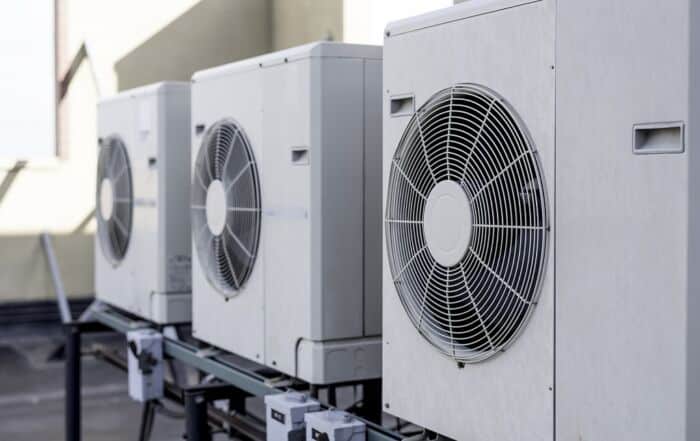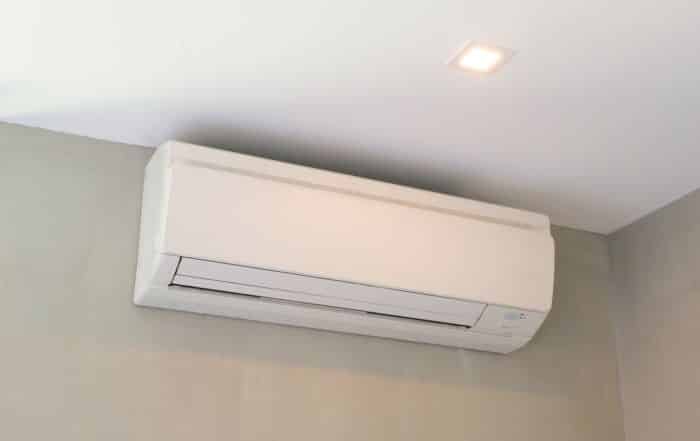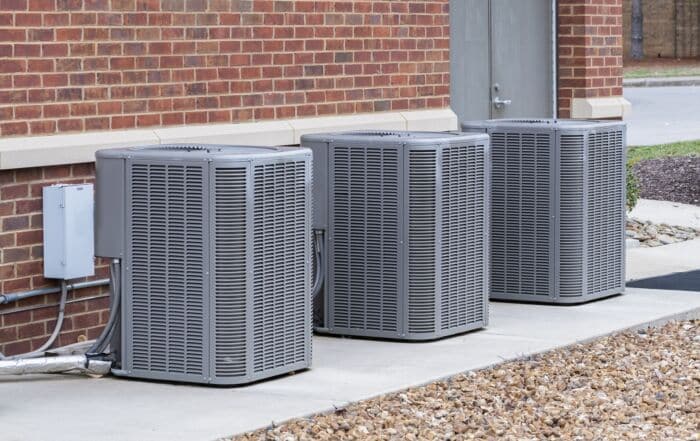Air conditioning systems are indispensable in maintaining comfort within our homes, particularly in the intense heat of Dallas summers. They play a critical role not only in cooling the air but also in controlling humidity levels, which contributes to a pleasant living environment. To ensure your AC unit operates efficiently and avoids unexpected breakdowns, it's essential to follow a structured maintenance routine. In this comprehensive guide, we’ll walk you through the key steps to keep your air conditioning system running smoothly all year long.
Understanding the Components of Your AC System
Air conditioning systems are complex machines with several integral components working together to deliver cool, comfortable air. Understanding these components can help you appreciate why regular maintenance is vital.
1. Compressor
The compressor is often described as the heart of the AC system. Its primary function is to compress refrigerant gas and circulate it through the system. This process increases the refrigerant's pressure and temperature, preparing it for heat release in the condenser coils. Without a well-functioning compressor, the cooling cycle cannot proceed effectively.
2. Condenser Coils
Located in the outdoor unit, the condenser coils are responsible for releasing heat absorbed from the indoor air. As the refrigerant flows through these coils, it cools and releases heat to the outside air. Dirty or obstructed condenser coils can significantly reduce system efficiency, causing the unit to work harder and increasing energy consumption.
3. Evaporator Coils
Situated inside the home, the evaporator coils absorb heat from the indoor air, cooling it before it is circulated back through the house. These coils also help dehumidify the air, which is crucial for comfort. Efficient operation of the evaporator coils is essential for maintaining a cool and pleasant indoor environment.
4. Expansion Valve
The expansion valve controls the flow of refrigerant into the evaporator coils. It regulates the temperature and pressure of the refrigerant, ensuring that it evaporates properly and absorbs the maximum amount of heat. Proper functioning of the expansion valve is crucial for maintaining optimal cooling performance.
Regularly Scheduled Inspections and Cleaning
Consistent maintenance is key to ensuring your AC system remains in top condition throughout the year. Here’s a detailed look at the essential maintenance tasks:
1. Cleaning or Replacing Air Filters
Air filters trap dust, pollen, and other particles from entering the system. Over time, these filters can become clogged, impeding airflow and reducing system efficiency. Here’s how to manage air filters:
- Monthly Checks: Inspect filters every month. If they appear dirty or clogged, replace them immediately.
- Types of Filters: Choose filters based on your home’s needs. Options include HEPA filters for high-efficiency particulate air and activated carbon filters for odor removal.
- Professional Cleaning: Have a professional technician inspect and clean your entire system annually to ensure optimal performance.
2. Inspecting Refrigerant Levels
Refrigerant is crucial for cooling your home. Low refrigerant levels can cause the system to underperform or freeze up. Regular checks are necessary to maintain efficiency:
- Professional Assessment: Only qualified technicians should check and adjust refrigerant levels. They use specialized gauges to measure pressure and ensure it meets manufacturer specifications.
- Avoid DIY: Handling refrigerant requires specialized training and equipment. Incorrect handling can lead to unsafe conditions or system damage.
3. Cleaning Evaporator and Condenser Coils
Dirty coils can significantly impact system performance. Regular cleaning helps maintain efficiency:
- Turn Off Power: Always shut off power before performing any maintenance.
- Remove Debris: Clear away leaves, dirt, and other debris from around the condenser unit.
- Brush and Vacuum: Use a soft brush to remove dirt from the coil fins. A vacuum with a hose attachment can help clean between the fins.
- Inspect for Damage: Check for bent fins or other damage. Use a fin comb to straighten bent fins.
4. Checking Electrical Connections
Electrical connections are critical for safe and efficient operation. Regular checks help prevent potential hazards:
- Inspect Connections: Look for loose or damaged wires and connections.
- Tighten and Repair: Secure loose connections and replace any damaged wires.
5. Inspecting the Fan Belt
The fan belt helps drive the fan that circulates air through the system. Regular inspection ensures it operates correctly:
- Check for Wear: Look for signs of wear or damage on the fan belt.
- Adjust Tension: Ensure the belt is properly tensioned to avoid slipping or breakage.
Checking and Replacing Filters
Air filters are a small but crucial component of your AC system. They play a significant role in maintaining indoor air quality and system efficiency. Here’s a closer look at managing filters:
1. Frequency of Replacement
Filters should be checked at least once a month. Depending on usage and environmental conditions, you may need to replace them more frequently. Signs that a filter needs replacing include:
- Reduced Airflow: If you notice a decrease in airflow, the filter may be clogged.
- Increased Energy Bills: A dirty filter can cause the system to work harder, increasing energy costs.
- Poor Air Quality: If indoor air quality worsens, it might be due to a clogged filter.
2. Types of Filters
Different filters offer various levels of filtration. Choose the one that best suits your needs:
- HEPA Filters: These high-efficiency filters trap small particles and are ideal for homes with allergies or respiratory issues.
- Activated Carbon Filters: Designed to remove odors and gases, these filters are beneficial if you have pets or smoke indoors.
- Electrostatic Filters: These filters use static electricity to capture particles and are washable and reusable.
3. Professional Inspection
Once a year, schedule a professional inspection of your AC system. Technicians can assess the condition of the filters, clean the system, and ensure everything is functioning correctly.
Refrigerant Level Check-Up
Proper refrigerant levels are essential for effective cooling. Here’s what you need to know:
1. Importance of Proper Levels
Adequate refrigerant levels ensure that your system cools efficiently. Low levels can cause the system to work harder, leading to higher energy bills and potential damage.
2. How Professionals Check Levels
Technicians use specialized gauges to measure refrigerant pressure. They compare these readings to the manufacturer’s specifications and adjust levels as needed.
3. Addressing Refrigerant Leaks
If refrigerant levels are low, there may be a leak. Technicians will locate and repair any leaks before recharging the system. This ensures that the system operates efficiently and safely.
Condenser Coil Cleaning
The condenser coils release heat absorbed by the refrigerant. Keeping them clean is vital for maintaining system efficiency:
1. Turn Off the Power
Always turn off power to the AC unit before starting any maintenance work. This ensures your safety while performing the cleaning.
2. Remove Debris
Clear away any debris around the condenser unit. This includes leaves, sticks, and other obstructions that can impede airflow.
3. Clean the Coils
Use a soft brush to gently scrub the coil fins. For more thorough cleaning, use a vacuum with a hose attachment to remove dust and dirt between the fins.
4. Check for Damage
Inspect the coils for any signs of damage, such as bent fins or corrosion. Use a fin comb to straighten bent fins and ensure proper airflow.
Inspecting Ductwork for Leaks
Ductwork leaks can significantly impact your system’s efficiency. Proper inspection and repair are crucial:
1. Visual Inspection
Examine duct joints and seams for any visible gaps or holes. Leaks can lead to air loss and reduced system efficiency.
2. Pressure Testing
A pressure test with a manometer can help identify leaks by measuring pressure loss in the duct system. This test helps locate leaks that may not be visible.
3. Seal Leaks
Use duct tape or mastic sealant to seal any detected leaks. Ensure that all joints are properly sealed to prevent air from escaping.
4. Check Insulation
Inspect the insulation around the ducts for any damage or tears. Replace or repair insulation as needed to maintain energy efficiency.
Professional Maintenance Services
Investing in professional maintenance services can provide numerous benefits:
1. Comprehensive Inspection
Professional technicians will perform a thorough inspection of your entire AC system, including filters, coils, electrical connections, and refrigerant levels. They can identify and address issues before they become major problems.
2. Cleaning and Adjustments
Technicians will clean essential components, adjust settings, and make necessary repairs. Regular professional maintenance helps keep your system running efficiently and prolongs its lifespan.
3. Safety Checks
Professionals are trained to recognize potential safety hazards, such as faulty wiring or gas leaks. Their inspections help ensure your home remains safe from potential risks associated with air conditioning systems.
4. Extended Warranty
Many HVAC companies offer extended warranties or maintenance plans that include regular inspections and priority service. These plans can provide peace of mind and save money on future repairs.
5. Expert Advice
Technicians can provide valuable advice on improving system efficiency, reducing energy costs, and addressing specific concerns. They can also recommend upgrades or modifications to enhance performance.
Maintaining your air conditioning system is essential for ensuring its efficiency, reliability, and longevity. By understanding the components of your AC system, scheduling regular inspections and cleanings, and addressing issues such as filter replacement, refrigerant levels, and coil cleanliness, you can keep your system running smoothly throughout the year.
Regular maintenance not only helps prevent unexpected breakdowns and costly repairs but also improves energy efficiency and indoor comfort. If you’re not comfortable performing these tasks yourself, don’t hesitate to reach out to a professional HVAC company.
For reliable maintenance and repair services in the Dallas area, Dallas Heating and Air Conditioning is here to help. Our team of experts is dedicated to ensuring your AC system operates at its best, no matter the season. Contact us today to schedule your next service appointment and experience the peace of mind that comes with knowing your cooling system is in expert hands.
Your comfort is our priority, and we’re committed to providing exceptional service to keep your home cool and comfortable all year long.
Related Posts
Exploring Ductless Air Conditioning Systems for Small Spaces
If you’re a homeowner tired of sweating through sweltering summers, a ductless air conditioning [...]
Signs Your Air Conditioning Unit Needs Professional Maintenance
Imagine coming home on a sweltering summer day only to find that your air [...]
Common Misconceptions About Air Conditioning Usage and Costs
Air conditioning units are a staple in many homes, especially during the hot summer [...]


